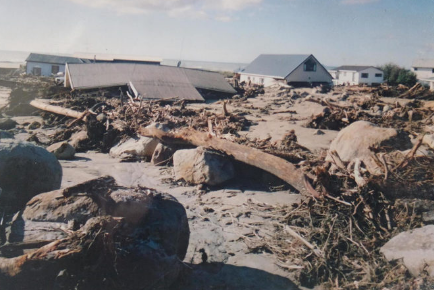First effects of El Niño are being felt but experts say it’s too early to predict the damage
The early impact of the El Niño weather system is being felt in Ecuador’s coastal region and will intensify in the coming weeks, according to the latest report by the Ecuadorian Navy’s oceanographic institute.

Weather experts say it is too early to predict if the coming El Niño will produce devastation similar to that suffered in 1997 and 1998.
“In readings taken last October 31, the sea level is 15 centimeters above normal, and the water temperature has reached 23.7 degrees, which is three degrees above normal,” the Navy’s Regional Study of the El Niño Phenomenon reports. “This data indicates the arrival of a strong El Niño, as predicted.”
According to Rommel Suntaxi of Ecuador’s Meteorological Institute, unseasonably intense storms have been recorded in El Oro, Guayas, Manabi and Esmeraldas Provinces since October 16. “Rainfall on the coast and littoral will gradually intensify in the coming weeks,” he said, adding that the full impact of El Niño may not be felt until December and January.
“The intensity of the weather system is difficult to predict since there are many variables, but we know this will be one of the strongest El Niños since the 1997 and 1998 event, which caused a great deal of destruction,” Suntaxi said.
According to Michael Linthon, director of the Naval institute, it is important for the population to understand the threat it faces from El Niño. “There is some confusion about this since most attention is focused on the potential damage of floods in the coastal region,” he says. “We are all familiar with the horrible impacts of the 1998 El Niño.
Flooding rains will occur at lower elevations near the coast and in the western foothills of the Andes Mountains, Linthon explains. “The heaviest rain will fall on the coast and at elevations up to 1,000 meters (3,300 feet) with elevations between 1,000 and 1,500 meters experiencing higher than normal amounts,” he says.
At higher elevations, and in the inter-mountain valley, there will be below average rainfall and drought conditions. “We are already experiencing the impact of this with electricity rationing and the drought could extend to February and March of next year,” he says.
El Niño’s impact in the Amazon region, on the east side of the Andes, is more difficult to predict, says Linthon. “We expect drier than normal conditions, but this depends on several factors that will develop in the coming weeks. The entire Amazon basis, all the way to the Atlantic Ocean, is seeing drought conditions unrelated to El Niño and this could be exaggerated by its effects.”
Linthon says the impact of El Niño will be similar in neighboring Peru and Colombia. “This is a regional phenomenon and is why Colombia is unable to provide us with hydro-generated electricity. The drought has also reduced the level of their rivers and reservoirs.”
Linthon cautions against assuming we are facing a repeat of 1997 and 1998. “Obviously, we must be prepared for the worst but, on the other hand, it is far too early to make any precise predictions.”





















